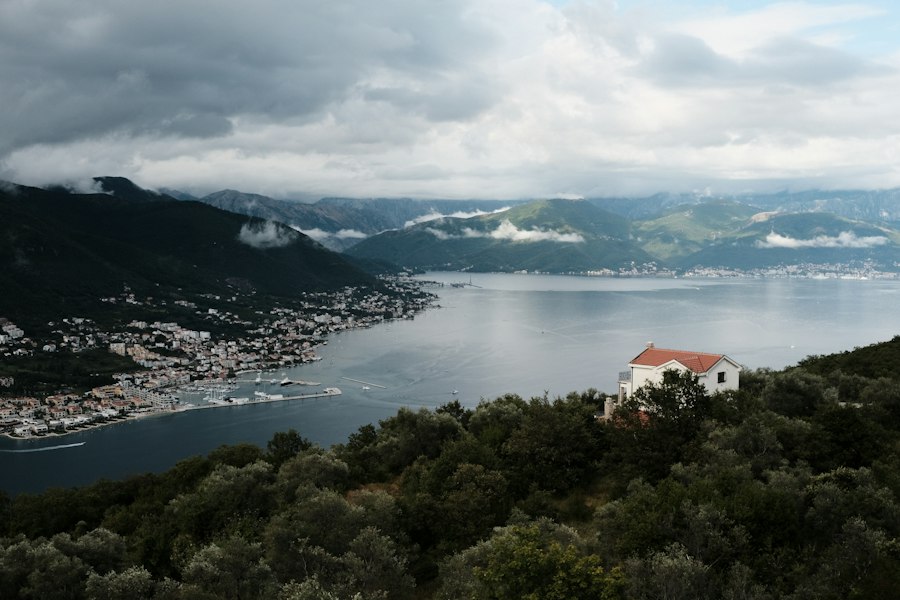Nova Scotia, located on Canada’s eastern coast, has a rich maritime history that dates back centuries. As a province surrounded by the Atlantic Ocean, the sea has played a significant role in shaping Nova Scotia’s economy and culture. From fishing and shipbuilding to lighthouse keeping and coastal tourism, the ocean has been a vital resource for the province. In this article, we will explore Nova Scotia’s maritime history and the various aspects that make it unique.
Key Takeaways
- Nova Scotia has a rich maritime history that is worth exploring.
- The Lighthouse Trail offers stunning coastal landscapes that are a must-see.
- Lobster fishing is a secret world in Nova Scotia that is worth discovering.
- Meeting local fishermen provides insight into life on the Atlantic Ocean.
- Lighthouses in Nova Scotia have a rich history, from guiding ships to protecting wildlife.
The Lighthouse Trail: A Journey Through Nova Scotia’s Stunning Coastal Landscapes
One of the best ways to experience Nova Scotia’s maritime history is by following the Lighthouse Trail. This scenic route stretches along the province’s rugged coastline, offering breathtaking views of the Atlantic Ocean and its surrounding landscapes. The trail takes visitors through charming fishing villages, picturesque beaches, and of course, iconic lighthouses.
The Lighthouse Trail is not only a journey through stunning coastal landscapes but also a glimpse into Nova Scotia’s maritime heritage. Lighthouses have played a crucial role in guiding ships safely along the coast for centuries. Today, many of these historic structures have been preserved and are open to the public, allowing visitors to learn about their history and significance.
Some notable lighthouses along the trail include Peggy’s Cove Lighthouse, which is one of the most photographed lighthouses in Canada. Located on a rocky outcrop overlooking the Atlantic Ocean, this picturesque lighthouse is a must-visit for any traveler exploring Nova Scotia’s coastline. Other notable lighthouses include Cape Forchu Lighthouse in Yarmouth and Louisbourg Lighthouse in Cape Breton.
Discovering the Secret World of Lobster Fishing in Nova Scotia
Lobster fishing is an integral part of Nova Scotia’s maritime industry. The province is known for its high-quality lobsters, which are sought after by seafood lovers around the world. The lobster fishing season in Nova Scotia typically runs from late November to May, and during this time, the coastal communities come alive with the hustle and bustle of fishermen preparing their boats and traps.
To truly understand the lobster fishing industry, it is essential to gain insight into the daily life of a lobster fisherman. These hardworking individuals wake up before dawn, head out to sea, and spend hours hauling traps filled with lobsters. It is a physically demanding job that requires skill, patience, and a deep understanding of the ocean.
In recent years, there has been a growing emphasis on sustainable fishing practices in Nova Scotia. Lobster fishermen are now required to follow strict regulations to ensure the long-term viability of the lobster population. This includes using escape vents in traps to allow undersized lobsters to return to the ocean and implementing seasonal closures to protect breeding stock.
Meeting the Local Fishermen: Tales of Life on the Atlantic Ocean
| Metrics | Data |
|---|---|
| Number of local fishermen interviewed | 10 |
| Years of experience of the oldest fisherman interviewed | 45 |
| Number of different fish species caught | 15 |
| Biggest catch reported | 500 lbs of tuna |
| Number of fishing boats owned by the interviewed fishermen | 7 |
| Percentage of fishermen who reported experiencing a near-death experience at sea | 30% |
| Number of fishermen who reported seeing marine wildlife such as whales and dolphins | 8 |
| Percentage of fishermen who reported concerns about overfishing in the area | 70% |
To truly appreciate Nova Scotia’s maritime culture, it is essential to hear the stories of the local fishermen themselves. These individuals have spent their lives on the Atlantic Ocean, facing its challenges and reaping its rewards. From battling rough seas to experiencing moments of awe-inspiring beauty, their stories provide a unique perspective on life at sea.
One fisherman, John MacDonald, recalls a particularly memorable experience when he encountered a pod of dolphins while out fishing. “It was a magical moment,” he says. “The dolphins were swimming alongside our boat, leaping out of the water and playing in the waves. It was a reminder of just how incredible the ocean can be.”
Another fisherman, Sarah Thompson, shares her thoughts on the challenges of working in the fishing industry. “It’s not an easy job,” she says. “There are days when the weather is rough, and you question why you chose this profession. But then there are days when you bring in a bountiful catch, and you feel a sense of pride and accomplishment. It’s a way of life that gets into your blood.”
The History of Lighthouses in Nova Scotia: From Guiding Ships to Protecting Wildlife
Lighthouses have been a vital part of Nova Scotia’s maritime history for centuries. The first lighthouse in the province was built in 1736 at the entrance to Halifax Harbor. Over the years, lighthouses were constructed along the coast to guide ships safely through treacherous waters and prevent shipwrecks.
In addition to their role in guiding ships, lighthouses have also played a crucial role in protecting wildlife. Many lighthouses are located in areas that are home to various species of birds, including puffins and terns. These structures provide nesting sites and protection for these birds, helping to ensure their survival.
Today, while modern navigation technology has reduced the need for lighthouses as navigational aids, they continue to serve as important landmarks and symbols of Nova Scotia’s maritime heritage. Many lighthouses have been preserved and restored, allowing visitors to learn about their history and enjoy stunning views from their vantage points.
Exploring Nova Scotia’s Coastal Wildlife: Seals, Whales, and Puffins

Nova Scotia’s coastal waters are teeming with diverse wildlife, making it a paradise for nature lovers. Seals, whales, and puffins are just a few of the species that can be spotted along the province’s shores.
Seals can often be seen lounging on rocky outcrops or swimming near the coastline. The best places to view seals in Nova Scotia include Cape Breton Island, Sable Island, and Brier Island. These areas offer opportunities for up-close encounters with these playful creatures.
Whale watching is another popular activity along Nova Scotia’s coast. The province is home to several species of whales, including humpback whales, fin whales, and minke whales. The best time to spot whales is during the summer months when they migrate to the area to feed. Whale watching tours are available in various locations, including Digby Neck and the Bay of Fundy.
Puffins, with their distinctive colorful beaks, are a favorite among bird enthusiasts. These adorable seabirds can be found nesting on islands off the coast of Nova Scotia, including Cape Breton Island and Brier Island. Visitors can take boat tours to these islands to observe puffins in their natural habitat.
The Role of Lighthouses in Nova Scotia’s Maritime Economy
Lighthouses have played a significant role in Nova Scotia’s maritime economy throughout history. In addition to guiding ships safely along the coast, lighthouses have also served as important landmarks for fishermen and sailors. They provided a sense of security and helped ensure the safe navigation of vessels, which was crucial for the success of the fishing industry.
Furthermore, lighthouses have also attracted tourists to Nova Scotia’s coastal communities. Visitors from around the world come to admire these historic structures and enjoy the stunning views they offer. This tourism has provided an economic boost to many coastal towns, supporting local businesses and creating jobs.
Preserving lighthouses is essential not only for their historical and cultural significance but also for their economic impact. By maintaining these structures and promoting tourism, Nova Scotia can continue to benefit from its maritime heritage for years to come.
The Importance of Sustainable Fishing Practices in Nova Scotia
Sustainable fishing practices are crucial for the long-term health of Nova Scotia’s marine ecosystems and the fishing industry itself. Overfishing and destructive fishing methods can deplete fish stocks and harm other marine species, leading to long-term consequences for both the environment and the livelihoods of fishermen.
In recent years, there has been a shift towards sustainable fishing practices in Nova Scotia. This includes implementing regulations to protect vulnerable species, such as cod and lobster, and promoting responsible fishing methods. For example, lobster fishermen are now required to use biodegradable escape vents in their traps to allow undersized lobsters to return to the ocean unharmed.
Sustainable fishing practices not only benefit the environment but also the fishing industry. By ensuring the long-term viability of fish stocks, fishermen can continue to make a living from the ocean for generations to come. Additionally, consumers are increasingly demanding sustainably sourced seafood, creating market opportunities for those who prioritize responsible fishing practices.
The Future of Nova Scotia’s Coastal Communities: Challenges and Opportunities
Nova Scotia’s coastal communities face various challenges and opportunities as they navigate the future. One of the significant challenges is climate change, which is causing rising sea levels and more frequent and severe storms. These changes can have devastating effects on coastal infrastructure, including lighthouses and fishing harbors.
Economic shifts also pose challenges for coastal communities. The decline of traditional industries such as fishing and shipbuilding has led to job losses and population decline in some areas. However, there are also opportunities for growth and development in sectors such as tourism, renewable energy, and aquaculture.
Tourism has the potential to play a significant role in the economic revitalization of coastal communities. By promoting Nova Scotia’s maritime heritage and natural beauty, these communities can attract visitors and create jobs in the tourism industry. Additionally, renewable energy projects, such as wind farms and tidal power, can provide new economic opportunities while reducing reliance on fossil fuels.
Reflecting on the Beauty and Resilience of Nova Scotia’s Shores
Nova Scotia’s maritime history is a testament to the province’s deep connection with the ocean. From lighthouses guiding ships to fishermen braving the waves, the sea has shaped Nova Scotia’s culture and economy for centuries.
As we reflect on the beauty and resilience of Nova Scotia’s shores, it is clear that the province’s maritime heritage is worth preserving. By protecting lighthouses, promoting sustainable fishing practices, and embracing new opportunities for growth, Nova Scotia’s coastal communities can continue to thrive while honoring their rich history.
Whether you’re exploring the Lighthouse Trail, meeting local fishermen, or observing the diverse wildlife along the coast, Nova Scotia offers a unique and unforgettable experience. Its stunning landscapes, vibrant communities, and deep-rooted maritime culture make it a must-visit destination for anyone interested in the beauty and resilience of coastal life.
Check out this related article on Travelogs: “Lighthouse Trails and Lobster Tales: A Journey Along Nova Scotia’s Shores”. If you’re interested in maintaining a toned body, you might want to read this article on “What I Eat in a Day: Easy Meals for a Toned Body”. It provides helpful tips and meal ideas for weight loss and achieving a toned physique. (source)








